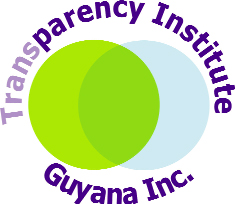There has been various reporting in Guyana that has called into question how government offices manage public funds. The most recent of which is the Ramnarine imbroglio involving $90 million. Although the amounts and the institutions have varied over the years, the common denominator has been the misappropriation of public funds and the management of expenditure and procurement. Of concern also is whether these are isolated incidents or whether we are witnessing the tip of the iceberg. Irrespective of the amount, misused public funds has a direct impact on citizens and especially the poor who rely on public services the most. If money is being siphoned off, or not being used appropriately then key social programmes, economic development etc will be affected. What is equally harmful for state-society relations, is the perception of government corruption by the public and inter alia the erosion of public trust. These circumstances demand a shift in how public funds are managed, monitored and highlight a role for citizens in holding public officials to account. Can a nurse, a student or a minibus conductor play a role in anti-corruption efforts? This article explores one effective and groundbreaking method of tackling corruption and resource distribution in Brazil. It argues that all citizens have a right to know how public funds are being spent and government has a responsibility to be responsive and to ensure that funds are being spent in accordance with the priorities of the public.
Corruption is a reality in public office throughout the world. In recent years, corruption has entered the mainstream and is being researched, discussed, measured (Corruption Perceptions Index) and addressed. Governments are taking action to address the problem of corruption – several governments have introduced anti-corruption laws, provided protection for whistleblowers, prosecuted corrupt officials and introduced programmes to stamp out corruption. India has proposed an Anticorruption Agency and Indonesia has an anti-corruption committee. International agencies and donors have introduced greater safeguards including the requirement that bilateral project budgets be made public and controls set on how money is spent. However, while these initiatives are meant to benefit citizens, because they all operate in a ‘top-down’ manner and have minimal participation by citizens in their conceptualization, formulation and implementation, their effectiveness is questionable. Popular participation has come to be characterized by protests, the most famous of which in recent times has been the Arab Spring in which several governments, perceived by the public to be unresponsive and corrupt, were toppled. But there are other more structured approaches that have been developed to address issues of corruption and resource allocation.

In neighbouring Brazil they have championed citizen involvement in policy making to increase transparency and social justice. Citizens are not only actively involved in monitoring government officials but there is a willingness or acceptance by officials to be monitored. Brazil’s participatory budgeting model, which was made famous by the cities of Belo Horizonte and Porto Alegre, has been replicated in many other parts of the world (including Africa and Asia) and has inspired citizens across the world. Participatory Budgeting (PB) addresses corruption by increasing transparency, accountability and social inclusion government. In this model ordinary people are involved in formulating city budgets and holding officials to account once the funds have been spent. This is made possible through the provision of a space for public debate. Persons can freely express their preferences by voting. Porto Alegre may be a city but it has the size (more than a million people) and revenue (billions of US dollars) of a small state.
In 1989, the city of Porto Alegre introduced participatory budgeting (PB) policy, which is now considered to be central to how the city is managed. This policy was started in response to sentiments of inequality in which elites dominated how resources were spent and often benefitted personally at the expense of the poor. The model involved thousands of local residents who came together to have a say in determining the priorities of the city’s capital budget. Citizens are provided with information on the budget, work along with public officials and have budgetary debates in which citizen priorities are voiced. There are structures within the municipality (a planning office, a coordinating body) that set up discussion assemblies and then aggregate the claims of residents and determine whether they are technically or economically viable. Citizens do not control the entire budget but have a say in areas such as education, health and social welfare and economic development. In the case of Porto Alegre, studies have shown that resource allocation patterns have changed over time, that citizens have control over government decisions and that there are high rates of decisions that are approved being implemented.
Participatory budgeting has now become widespread and has helped to involve people directly in budgeting procedures, have priorities of their areas addressed and to create an environment in which public spending is not only grounded in people’s priorities but closely monitored. PB can be an effective tool in anti-corruption efforts because it promotes active citizens, accountability and transparency in fiscal management. Above all what the Porto Alegre model proved is that there is another way and people can play a role in what are usually considered to be complex or exclusive realms of the government. Guyana can ill afford to waste precious public revenue on corruption and the government needs to work harder at ensuring the accountability and integrity of our public expenditure systems and offices. The people of Guyana need to be part of the solution.





